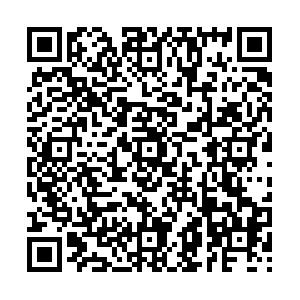The Bidirectional Adaptation of Ricci’s Image in the Late Ming Dynasty and Its Methodological Significance
-
摘要: 利玛窦在晚明中国的形象,不是单方面文化适应的产物,而是中西文化双向调适的结果。利玛窦以西僧形象进入中国,是基于中国官员给出的建议,同时也受到了早期耶稣会士在日本经验的直接启发,是进入中国扬教所采取的权宜之计。利玛窦到韶州以后主动改着儒生衣冠、并尝试以中文著述合儒,由此建构了其“西儒”形象。这同样是接受了中国文人的建议,也获得了耶稣会的批准。利玛窦最终所欲塑造的自我形象其实是“畸人”。借助这一形象,中西双方在“天学”与“超性学”所对应的儒家事天敬天学与基督教神哲学,“人学”与“性学”所对应的中西天文历算之学这两个维度上展开互动与对话。中国正统儒家和佛教徒,将利玛窦视为异人、妖人,是对利玛窦“阳辟佛而阴贬儒”的反拨,以“他者化”的书写反向强化了利玛窦非儒非僧的畸人形象。利玛窦形象,作为表征“利玛窦规矩”的文化符号,在当代中西文化交流互鉴和建立人类命运共同体的时代语境中,仍然具有重要的方法论意义。Abstract: Matteo Ricci's image in late Ming China is not the product of unilateral cultural adaptation, but the result of a bilateral interpretation of Chinese and Western cultures. Matteo Ricci’s entry into China as a Western monk was based on advice from Chinese officials and was directly inspired by the experience of the early Jesuits in Japan, which was actually expedient. Upon his arrival in Shaozhou, Matteo Ricci took the initiative to change the attire of Confucian scholars and at the same time tried to write books in Chinese, thus constructing his image of a “Western Confucian.” This, too, was suggested by the Chinese literati and, of course, approved by the Jesuits. The selfimage that Ricci intended to create was literally that of a monster, a freak or freakish person. This image contains the connotations of Christian theology and astronomical calendar, and in fact, is also the product of a dialogue between Ricci and Catholic Chinese literati. Chinese orthodox Confucians and Buddhists regard Matteo Ricci as a demon, their writing of “otherization” highlighting Matteo’s self-image as non-Confucian and non-Buddhist. The image of Ricci, as a cultural symbol representing the “rites of Matteo Ricci,” still has important methodological significance in the context of contemporary cultural exchanges and mutual learning between China and the West.
-
Key words:
- Matteo Ricci /
- image adjustment /
- acculturation
-
[1] .邓恩《从利玛窦到汤若望——晚明的耶稣会传教士》,余三乐、石蓉译,上海古籍出版社,2003年。 [2] .纪建勋《“神父的新装”抑或“耶稣基督的中国面孔”——利玛窦形象文化史研究的是与非》,《澳门理工学报》2022年第3期。 [3] .柯毅霖《晚明基督论》,王志成等译,四川人民出版社,1999年。 [4] .李贽《焚书·续焚书校释》,陈仁仁校释,岳麓书社,2011年。 [5] .利玛窦著,汪汝淳校《重刻畸人十篇卷上》,李之藻编,黄曙辉点校《天学初函》,上海交通大学出版社,2013年。 [6] .利玛窦《利玛窦书信集》,罗渔译,光启、辅仁联合出版社,1986年。 [7] .利玛窦《天主实义今注》,梅谦立注、谭杰校勘,商务印书馆,2014年。 [8] .利玛窦《耶稣会与天主教进入中国史》,文铮译、梅欧金校,商务印书馆,2014年。 [9] .刘耘华《诠释的圆环——明末清初传教士对儒家经典的解释及其本土回应》,北京大学出版社,2005年。 [10] .孟华主编《比较文学形象学》,北京大学出版社,2001年。 [11] .裴化行《利玛窦神父传》,管震湖译,商务印书馆,1998年。 [12] .裴化行《天主教十六世纪在华传教志》,萧濬华译,商务印书馆,1937年。 [13] .戚印平《远东耶稣会士关于易服问题的争议及其文化意义》,《浙江学刊》2003年第3期。 [14] .史景迁《利玛窦的记忆之宫当西方遇到东方》,陈恒,梅义征译,上海远东出版社,2005年。 [15] .宋黎明《神父的新装——利玛窦在中国(1582—1610)》,南京大学出版社,2011年。 [16] .汤开建汇释《利玛窦明清中文文献资料汇释》,上海古籍出版社,2017年。 [17] .徐昌治《破邪集》,周岩编校《明末清初天主教史文献新编》,国家图书馆出版社,2013年。 [18] .庄子著,郭象注《庄子注疏》,中华书局,2010年。 [19] .祩宏著,张景岗点校《莲池大师全集》,华夏出版社,2011年。 [20] .钟鸣旦著,代国庆译《利玛窦:因人成己》,《学术研究》2012年第8期。 [21] .Vernon Ruland, “The Inflated Catholic Difference”, America, June 4, 1994. -

 点击查看大图
点击查看大图
计量
- 文章访问数: 220
- HTML全文浏览量: 48
- PDF下载量: 21
- 被引次数: 0



 下载:
下载:

